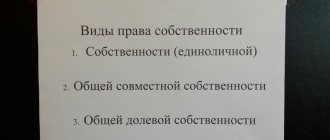Article updated: July 29, 2021
Elena GrushinaRealtor with a legal education. Work experience - 12 years
Hello. In this article, I will tell you how apartment buyers can safely transfer money to the seller, what safe transfer methods are available, what documents will be required, and what nuances there are if the apartment is purchased with a mortgage.
If you need free legal advice, write online to the lawyer on the right or call (24 hours a day, 7 days a week): 8 (Moscow and region); 8 (St. Petersburg and region); (all regions of the Russian Federation).
Buying a furnished apartment: how to complete the deal correctly
Advertisements on real estate websites from clients who want to sell an apartment with furniture and household appliances are not uncommon.
There are several reasons for this decision - from moving to another city or country, when it is simply unprofitable to carry all the furnishings with you, to buying a new home, with a design where things purchased long ago do not fit. The number of people wishing to purchase a “resale” property with ready-made furnishings is also large: many people urgently need housing, and it is simply not possible to spend their time on renovations, purchasing furniture and interior decoration.
How does the purchase and sale of real estate with furniture and appliances differ from standard contracts and what are the nuances of such transactions?
Useful video
Watch a video about the risks that arise when purchasing an apartment inherited by the seller:
Our specialists have prepared for you other useful materials on the topic of purchasing an apartment. Read about how much a real estate purchase and sale agreement costs and what expenses the buyer and seller bear when completing the transaction.
Why do you need a purchase and sale agreement for a furnished apartment?
When selling an apartment with furniture, the seller adds a certain amount to the cost of the property, which corresponds to the price of furniture, household appliances and interior items. Such a sale allows the seller to get rid of his property in an accelerated manner (there is no need to waste time searching for a furniture buyer).
Buyers themselves also often find such a purchase interesting for themselves. Firstly, furnishings are usually sold at a significant discount. If the buyer purchased everything separately, it would cost him more. Secondly, the buyer will not have to waste time finishing and renovating the purchased apartment.
Buying a furnished apartment involves additional risks for the buyer. After all, it may turn out that he pays for an apartment with furniture and appliances, but in fact receives an empty apartment. If the fact of purchasing furniture is not specified in the contract, then the buyer will not be able to prove that he is right.
In order to protect himself, the buyer can go in two ways:
- Register furniture and household appliances as separate items of purchase and sale in the purchase and sale agreement in the form of an inventory (attachment).
- Conclude a separate contract for the purchase and sale of furniture and a separate contract for apartments.
The first method is optimal when paying with the seller for your own money, the second - when using mortgage lending (since banks do not issue mortgages for the purchase of interior items, only for the apartment itself).
Safe ways to transfer money
In all 3 methods, payments for an apartment go through a guarantor-intermediary. With a safe deposit box and letter of credit, the bank acts as the guarantor; with a deposit account, the notary acts as the guarantor (if the purchase and sale transaction will go through him).
The main essence of settlements through a guarantor is that each party proves to each other that they are ready to enter into a deal. Before submitting the purchase and sale agreement for registration, the parties to the transaction contact a guarantor-intermediary, to whom the buyer transfers money for the apartment. Now the money is “frozen” for a certain period - the buyer will not be able to pick it up. By this he proves to the seller that he has fulfilled his obligation to pay. The guarantor will transfer the money to the seller only after registering the transaction, namely when he shows the registered purchase and sale agreement and/or an extract from the Unified State Register of Real Estate, where the buyer will be the new owner of the apartment. If for some reason the transaction was not registered and one of the parties refuses the transaction, the buyers take the money back after the end of the period.
Sample documents
(click on the pictures to enlarge them)
Sales and purchase agreement page with registration stamp
Extract from the Unified State Register of Real Estate
Guarantor services are paid. The law does not specify who should pay for it, so it’s up to buyers and sellers to agree. In my practice, it’s usually 50/50, because the guarantor protects the interests of both parties.
Method No. 1 - Through a safe deposit box (cash payment)
A bank safe deposit box is a small safe in a special bank storage facility (depository), which it rents out for storing any things - money, documents, valuables, etc.
The safe deposit box method is the most common - it is cheaper and less complicated. It is most convenient to pay through a cell if you are simultaneously selling your property and buying a new one. This is called alternative transactions, in common parlance - “along the chain”.
Most banks specialized in this service for real estate transactions. A bank employee will explain and document everything in detail. The parties only have to sign the necessary papers. In general, everything is adjusted and put on stream. Machines for counting and checking bills are also usually provided free of charge.
The cell rental service costs an average of 3,000 rubles. It is worth renting for at least 2 weeks, preferably for a month. You can extend your lease agreement at any time. Naturally, the size of the cell should be such that your cash fits in it.
Offers from banks
- Rent of safes in Sberbank
- Rent of VTB safe deposit boxes
- Rent for real estate transactions in Alfa-Bank
- Individual safe deposit boxes at Rosselkhozbank
- Safe deposit boxes at Otkritie Bank
Other articles
Deposit when buying an apartment - how to transfer it correctly so that there are no problems with sellers later + what documents to sign Documents for purchasing an apartment on the secondary market - a complete and current list
Brief instructions
The buyer and seller go to the bank and rent a safe deposit box in the buyer's name. The buyer, in the presence of the seller, deposits money into the rented locker. The bank employee will draw up an additional agreement that the seller will be given access to the locker only after he shows the apartment purchase and sale agreement with a registration stamp and/or an extract from the Unified State Register of Real Estate. As soon as the seller brings these documents, he will be given access to the box and will be able to withdraw the money. Next, I advise buyers to obtain a receipt from sellers confirming receipt of money.
detailed instructions
- Before signing the purchase and sale agreement, the buyer and the seller contact the bank, provide the employee with their passports and a sample purchase and sale agreement. Typically, the lease agreement and the act of acceptance and transfer of use of the cell are drawn up in the name of the buyer, but both parties can be tenants if desired.
Along with the lease agreement, the bank employee will draw up an additional agreement, which specifies the condition - the seller will have access to the locker only when he provides a sales contract with a registration stamp and/or an extract from the Unified State Register of Real Estate.Rent of a cell and additional agreement are paid separately. Some banks require you to leave a certain amount as collateral for the key to the safe deposit box.
- After paying for the service and signing the papers, the buyer and seller go to a special storage unit (depository). Buyers, in the presence of sellers, deposit money into a rented locker. I advise you to give the seller the opportunity to count the money so that there are no questions in the future. Typically, the bank provides machines for counting and checking the authenticity of banknotes free of charge. Next, the buyer closes the locker and keeps the key for himself. Now you can enter into a purchase and sale transaction.
- After registering the transaction, each participant will receive their originals of the registered purchase and sale agreement, and the buyer will also receive an extract from the Unified State Register of Real Estate. Registration certificates have not been issued since 2016.
- The participants in the transaction again go to the bank, where the buyer provides the employee with a lease agreement, and the seller provides a registered purchase and sale agreement and/or an extract from the Unified State Register for the apartment. As a result, the seller is given access to the cell and takes the money.
After the seller has received the money, I advise buyers to obtain a receipt from the seller. Only a receipt confirms the transfer of money, plus it will be required by the tax office when receiving a tax deduction for the purchase of an apartment. The receipt must be handwritten, in legible handwriting, dated and signed.Sample receipt
Method No. 2 - Through a letter of credit (non-cash payment)
The method is similar to renting a safe deposit box, only here the money is sent non-cash to the seller’s account from a special letter of credit account. An account in the name of the seller can be opened in any bank.
Disadvantages of this method: 1) Higher cost of the service itself + additional transfer fees. On average it comes out to 7,000 rubles. 2) Doesn’t fit well with “chain” transactions; 3) Not all banks provide such a service; 4) Many bank employees do not have sufficient experience in working with letter of credit accounts, so they usually take longer to process everything and may make mistakes.
Banks that provide letter of credit services for real estate transactions
- Sberbank
- VTB
- UniCredit Bank
Other articles
Who can challenge the deal after buying an apartment and how to protect yourself - listed the most common cases and how to protect yourself from them
Brief instructions
The buyer opens a savings account with a bank that provides the letter of credit service. Money is deposited into this account to purchase an apartment and an application is submitted to open a letter of credit. As a result, the money will be transferred to a special letter of credit account.
After registering the transaction, the seller provides the bank with a registered purchase and sale agreement and/or an extract from the Unified State Register of Real Estate. These documents prove that the registration was successful and the buyer became the owner of the apartment. The bank employee transfers money from the letter of credit account to the seller's account. An account in the name of the seller can be opened in any bank.
detailed instructions
- The buyer deposits the money for the apartment into his savings account.
- Participants in the transaction contact the bank and provide their passports, a sample apartment purchase and sale agreement and the seller’s details. The buyer signs an application for opening a letter of credit. The application must indicate the details of the seller and the condition - money from the letter of credit account will be transferred to the seller after he provides a registered purchase and sale agreement and/or an extract from the Unified State Register of Real Estate.
The term of the letter of credit should be set at least 2 weeks. Better for a month. You can extend it at any time.Sample application for opening a letter of credit
- Money from the buyer’s account will be transferred to a special letter of credit account and a statement of the transfer of funds will be issued. This statement proves that the buyer has fulfilled his payment obligation to the seller. The seller will be notified that a letter of credit has been opened in his favor. You can enter into a purchase and sale transaction.
- After registering the transaction, each participant will receive their originals of the registered purchase and sale agreement, and the buyer will also receive an extract from the Unified State Register of Real Estate. Registration certificates have not been issued since 2016.
- The participants in the transaction again contact the bank, where the seller provides the original of the registered sale and purchase agreement and/or an extract from the Unified State Register for the apartment. As a result, the money from the letter of credit account will be sent to the seller’s account, and the buyer will receive a confirmation document about the transfer.
Even though the buyer will receive a certificate confirming the transfer of money to the seller’s account, I still advise you to get a receipt from him - a sample. It won't be redundant.
Method No. 3 - Through a notary's deposit account (cash and non-cash payments)
The method is similar to a letter of credit, but a notary acts as a guarantor-intermediary in settlements and all transactions will go through his deposit account.
It is better to use this service only if a notary certifies the purchase and sale agreement. In this case, the service will cost 1,500 rubles (clause 8.1, clause 1, article 22.1 of the Fundamentals of Notaries) + an additional 1,000 - 3,000 rubles for legal and technical services.
If you are not going to certify the purchase and sale agreement, but simply use a deposit account, then the tariff will already be 0.5% of the transaction amount - pp. 8.2 clause 1 art. 22.1 Basics about notaries. For example, an apartment is bought for 5 million rubles, then the notary will have to pay 5 million * 0.5% = 25 thousand rubles. It is much cheaper to use a safe deposit box or letter of credit, and you need to provide much fewer documents than to a notary.
Brief instructions
The notary draws up a settlement agreement, which is signed by the parties to the transaction. All documents remain with the notary. The buyer then transfers the money to the notary's escrow account. Only after the notary ensures that the money has been transferred to his deposit account does he submit documents for registration. After registering the transaction, the notary transfers the money to the seller's account or gives him a check so that the seller can withdraw the money in cash from the bank.
detailed instructions
- Buyers and sellers contact a notary and provide the necessary documents for the transaction and settlements. What exactly the notary will tell you, everyone has their own requirements.
If the buyer decides to transfer money to the notary's deposit account by bank transfer, then the bank account must be registered specifically in the name of the buyer. It will not be possible to transfer money to a notary, for example, from the account of the buyer’s mother. Exception: if one of the buyers is a minor, then money can be transferred from the account of one of the parents (guardian).To prove that the account belongs to the buyer, you need to provide the notary with a certificate or a copy of the agreement for servicing the account. The same applies to the seller.
- The notary's assistant will draw up several copies of the purchase and sale agreement + agreement on cash settlements.
Participants sign documents. Next, the notary will certify the purchase and sale agreement. According to Art. 1 of Federal Law No. 338-FZ dated August 3, 2018, the notary submits a purchase and sale agreement to register the transaction. The documents remain with him - The notary will inform the buyer of the deposit account details. The buyer, at his own discretion, transfers money there - from his bank account or in cash. In both cases, the buyer will be given a certificate confirming the receipt of money in the deposit account. With this certificate, the buyer proves that he has fulfilled his obligations to pay the seller.
- Once the notary is satisfied that the money has been deposited into his escrow account, he will submit the purchase and sale agreement to register the transaction. Typically, documents are submitted electronically (electronic filing).
- After registering the transaction, the participants again go to the notary and collect their documents from him. Sellers can receive money in cash or into a bank account. In the case of cash, the notary will issue a check or order to the sellers, with which they can withdraw money from the escrow account.
And again about the receipt. Even though buyers have a certificate of transfer of money to a notary's deposit account, I still advise them to obtain a receipt from the seller confirming receipt of money. You will find a sample at the link.
Why do they create a written statement with an inventory of furniture and equipment?
The essence of the comprehensive agreement must be correctly understood.
The standard emphasizes the inextricable connection of the listed positions. In this case, the equipment components determine the condition of the property.
The annex to the agreement records quantitative and qualitative indicators. In the event of loss or damage to individual products, the buyer has the right to make legal claims. In addition to monetary compensation, you can demand an adequate replacement. Such violations are a sufficient reason for termination of the policy.
Broom is a guarantor of well-being
As soon as the cat gave the go-ahead to move in, we started cleaning, for which we made sure to use a broom. They treated this item with great care: they used it to sweep newborns and treat them for illnesses. Therefore, they bought a new broom for a new house, and this had to be done during the waxing moon and not in August. After cleaning, the broom was placed in the corner with the handle down to protect against the evil eye.
First days in a new home: so that everything goes well
There were rituals for the first days in a new home. It was important to finally drive out evil spirits and set a favorable tone for living.
Hidden Heirs
Special attention should be paid to buying housing from heirs, experts warn. Despite the fact that inheritance under a will has priority over inheritance under the law, there is still a circle of persons who are still entitled to a share, albeit a small one (in the amount of ½ of what they would be entitled to by law). These include disabled persons who were dependent on the testator. These are not only first-line heirs (parents, children and spouses), but also more distant relatives (brothers, sisters, grandmothers, grandfathers, uncles, aunts, etc.). Also, simply persons (not relatives) who were fully supported by the deceased have the right to an obligatory share.
You can find out about the heirs in a conversation with the owner based on indirect facts. “You can also ask for a notarized statement from the owner that he will independently resolve all issues if other heirs are discovered and claims are made against the new owner. If such persons lived together with the deceased, this will be reflected in the extract from the house register,” said Dmitry Kosmin.
Separate contracts for housing and furnishings
The fact is that this method is used when selling mortgaged housing.
The bank evaluates the apartment without furnishings, because the credit institution is only interested in the object as collateral. Therefore, if the apartment is sold furnished, the parties have to draw up separate agreements for the housing itself and for the furnishings. In the case of drawing up separate contracts for housing and furniture, there must also be two transfer deeds. When accepting an apartment with furnishings, the buyer signs both documents. By the way, the tax deduction for the latter will be carried out only based on the amount transferred to the seller for the apartment.
Cash payment
Nowadays it is quite a rare case, but sometimes it still happens. If you gave the seller an advance payment, and then the transaction did not take place, ask the seller to return the advance payment to you through the bank.
There are craftsmen who receive real money from buyers and return counterfeit ones. You yourself may not be able to identify a fake; even small portable checking machines cannot help. To avoid this disaster, it is best to receive money by bank transfer. As a last resort, request a meeting at the bank so that the received cash can be immediately deposited into your account in the presence of the seller. Banking equipment will detect the fake, and you will not be left with nothing.
Do you need a notary when buying an apartment with a mortgage?
Mandatory – no, not necessary. Previously, a notary was needed to certify a purchase and sale agreement. This is not required now. However, it can be useful and even necessary in some cases.
Certification of the purchase and sale agreement
The process of buying an apartment involves drawing up a contract. It is not necessary to notarize it, but it is possible. This, of course, is an additional cost, but at the same time, a certified contract is more powerful than an uncertified one. This is especially true regarding the transaction of buying and selling an apartment on the secondary market. Of all the options available, this is the riskiest. As a result, anything that can at least slightly increase the reliability of the transaction is welcome.
Certification of spouse's consent
When considering how the transaction proceeds if the seller or buyer is married, the first thing to note is the need to provide consent from the spouse for the purchase or sale of housing. Without such a document, the transaction may be declared invalid in court, which is not beneficial for both the buyer and the seller.
The notary in this case plays a decisive role. The fact is that such consent must be notarized. Otherwise, the document will not have legal force.
Features of buying a home using a certificate
As you know, maternity capital is paid for the birth of the first (from 01/01/2020), second and subsequent children. It can be implemented to improve the living conditions of the family. The main rule is the allocation of shares, where the child will also receive his part. Therefore, documents for purchasing housing using maternity capital first of all include a certificate giving the right to financial support.
Other conditions will also be required:
- Consent of the guardianship and trusteeship authorities (in case of parallel sale of the property where the child is registered);
- Reflection in the agreement of the fact of transfer of the share to each child for whom capital was received, with subsequent registration.
First you need to contact the Pension Fund (at the territorial office or through the State Services portal). The issued certificate is suitable for payment of the transaction in whole or in part on both the primary and secondary markets. The participation of the Pension Fund cannot be avoided, because money will be transferred to the account of the real estate seller by the specified department.
To complete the transaction, you will need documents confirming the presence of children: birth certificates. The buyer should not be deprived of parental rights in relation to his son or daughter. Supervisory authorities monitor the correctness of the transaction. However, if there are errors, they will not challenge the agreement itself, but only the legality of the transfer of funds under the certificate.
Important! Matkapital can be used to pay the down payment on a loan or to repay part of the debt and interest. Detailed instructions on the disposal of funds can be obtained on the Pension Fund website.
In most cases, the additional agreement has the same validity period as the main agreement. However, the parties may decide differently and indicate a specific period not only of when such a document comes into force, but also of when it terminates. It makes sense to do this only if the additional agreement involves the performance of certain actions on the part of the buyer or seller.
Separate contracts for housing and furnishings
According to Art.
127 of the Civil Code of Russia, a transaction can be concluded under a suspensive condition. This means that the parties have obligations under the transaction only after the occurrence of a certain condition, that is, the contract for the sale of furniture will become valid after the transfer of ownership of the apartment to the buyer. The first option is worth thinking about if you are purchasing a furnished apartment with your own funds. The second one is preferable when buying a home with a mortgage. Read more about each method.









